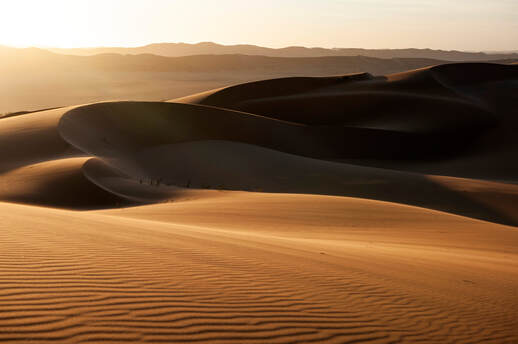Written by John Edward Betancourt  Caution: This article contains spoilers for Episode Two of ‘Eden: Untamed Planet’. When we think of untouched paradises hiding in remote corners of our world, certain images come to mind. The kind that features lush forests and diverse wildlife that knows nothing of humanity since this isolated place is a true oasis from the machinations of mankind, and it makes sense as to why we think of those particular images. After all, we always equate wildlife with parts of the world that are rich in beauty and full of resources for life to survive. But while those images aren’t wrong in the slightest, since we’ve seen time and time again that untouched regions of the planet are indeed lush with greenery and incredible creatures, it isn’t an entirely accurate representation of what an oasis of life looks like on Planet Earth. Because there are places around the globe that are seemingly inhospitable, where life has indeed learned to thrive and make use of the limited resources present there and it just so happens that last night’s episode of Eden: Untamed Planet, took the time to explore one of those exact regions. For ‘Namib: Skeleton Coast and Beyond’, plunged us into the middle of the Namib Desert, where heat reigns and water and food are seemingly scarce… to show us how an oasis of life can in fact function. And as it turns out, one of the big reasons that animals are able to thrive here, is the Atlantic Ocean. For it is what helps to make up the Skeleton Coast of this region and the seals that feast upon fish off the waters there, in turn help to sustain the various predators that swing by the coast to scavenge and hunt, and the wonder of the ocean’s role doesn’t end there. For in the morning, just around dawn and for a few hours after, the mist that the ocean creates, gently moves inward. Allowing for moisture and dew droplets to cascade over the dunes and that in turn, allows for a great deal of desert wildlife to grab hold of the all-important water they need to survive and what’s amazing, is that life in the heart of the desert eventually gets moving once the mist has receded. Granted, a majority of it doesn't move at all while the heat bakes the sand surrounding the creatures that populate the dunes, but once the sun goes down… the desert comes to life. For animals large and small can now go about the evening without worry of roasting and that indeed allows for epic hunting to take place, and well… it was simply fascinating to see and learn how many animals have adapted to this incredibly harsh environment and also, how many legendary and ‘traditional’ animals have opted to now call this place home as well. For giraffes, elephants and even lions roam the barren landscape of the Namib Desert, and they survive, because they’ve figured out the desert’s secrets. For instance, lions have now come to realize that shifts in wind can aid them in hunting, since that can provide them with audible cover when they approach their prey. As for giraffes, well they use the mist from the morning to get their water supply from trees when the moisture settles on the leaves, and they get a meal as well since those same leaves sustain them and elephants, well… they follow history in order to thrive. For generations of learning has allowed for matriarchs to follow riverbeds to lead their herd to luscious trees that are kept alive by way of underground aquifers that provide them with much needed water and really, in the end, this was nothing short of a powerful exploration of a corner of our world we write off often in our minds. A mistake that we make, because we believe that if a place cannot support human life, it is of no concern to us. But clearly, this part of the world deserves our attention and our awe… since nature has figured out how to adapt to its harshness so that life can thrive here in a dynamic and healthy manner. But while it was powerful to learn more about the majesty of the desert and the creatures that call it home, as this series is wont to do, it made sure to remind us of the importance of doing what we can to maintain its current state. For climate change will undoubtedly raise temperatures in this part of the world to levels that are dangerous to wildlife, which means we must continue to make efforts to reduce our carbon footprint so that this fascinating and seemingly inhospitable oasis, can be allowed to thrive in peace. Until next time.
0 Comments
Leave a Reply. |
Archives
April 2025
|
|
© 2012-2025, Nerds That Geek LLC.
All Rights Reserved. |
uWeb Hosting by FatCow

 RSS Feed
RSS Feed